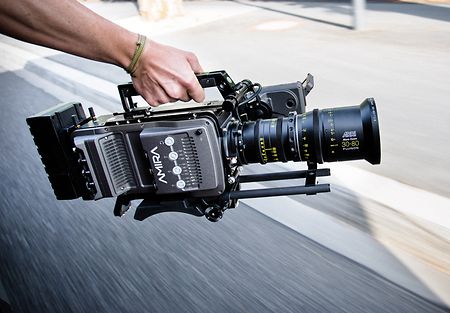Malaysia’s filmmaking industry recently celebrated a huge win with director Amanda Nell Eu’s debut feature film, “Tiger Stripes,” grabbing the top prize at Cannes’ International Critics’ Week. Using folkloric elements and set in the wild jungles of Malaysia, the award-winning film is a horror fairytale about a 12-year-old girl named Zaffan as she goes through puberty.
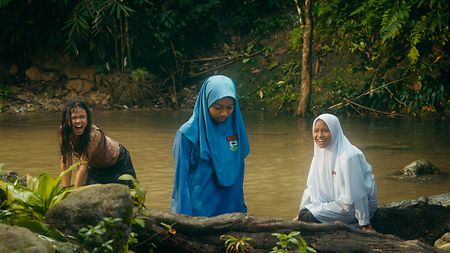
A still from “Tiger Stripes” with the film’s three lead characters
“The story focus was always on the girls and their world. We used these characters to challenge the definition of monstrosity, ugliness, beauty, and power, so the images were meant to be weird, wonderful, and playful. It was important to reflect the energy of the young girls and push the limit between realism and craziness,” says Eu.
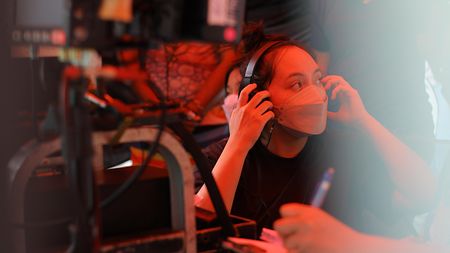
Director Amanda Nell Eu on set
Together with French cinematographer Jimmy Gimferrer, the duo began using technicolor films as references, studying works like “She Wore a Yellow Ribbon,” “Black Narcissus,” as well as “Suspiria” and “House” which utilized unconventional wild colors.
“The aim was to reconcile this exaggerated chromaticism and the story so that no matter how surreal, the scene still felt plausible. The key was to deliver a colorful and fantastic fairytale using classic elements of cinema. We pursued a genuine approach that would allow audiences to empathize with the characters and believe in the story because the image was believable. This concept is different from macro-productions that create a beautiful, stunning image but one that is so artificial that there is no room for any presence of reality,” explains Gimferrer.
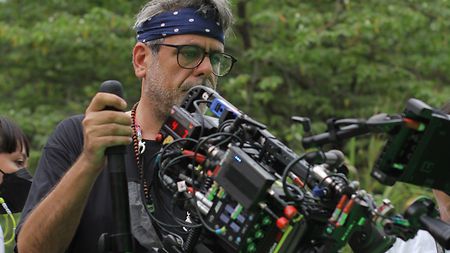
DP Jimmy Gimferrer shooting with the AMIRA on set
Eu and Gimferrer aimed to convey this intricate concept from script to screen using diverse techniques. For instance, they sought a more natural yet extraordinary aesthetic for the exteriors. When depicting the girls as they are sheltered from the adult world, the two filmmakers were unafraid to experiment and push creative boundaries.
This dichotomy is subtly shown in two consecutive scenes that vividly express Zaffan's loneliness and rejection. Gimferrer reveals: “The first is a tense scene involving Zaffan and her best friend, Farah. Here, the background walls of the Surau (Islamic assembly building) are painted a saturated green turquoise while Farah is wearing a cyan blue prefect’s uniform. We lit the scene with natural light and large diffusion frames.” The cinematographer continues: “In the following scene, we are met with the same colors. Zaffan’s mother, Mouna, is wearing a cyan blue factory uniform, while the turquoise green now comes from inside the bathroom. Although the doorway is lit with natural daylight from a diffused M18, the turquoise neon light tints Mouna’s face in a way that could never be possible in the real world. A close-up of a bucket and Zaffan’s hand-washing movements take us between two different lighting states—one more naturalistic and another totally unreal.”
Varying camera movements were also helpful in capturing the look of the film. The production integrated as many camera styles as possible: handheld, tracking, dollies, pans, and fixed shots. “I wanted to match the camera movement with the energy of the girls, so many scenes were shot via handheld or tracking. Conversely, we wanted to convey a distance to the adults, so scenes like the classroom and assembly felt slightly more rigid,” Eu continues.
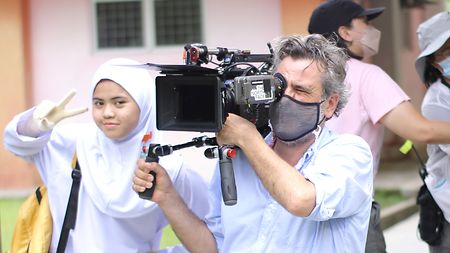
ARRI AMIRA captures the wildness of “Tiger Stripes”
The “Tiger Stripes” team utilized a combination of ARRI equipment, including the AMIRA camera paired with Zeiss Standard Speed T2.1 lenses, ARRI M18 lights, and SkyPanels to achieve their desired look. “Filming in the jungle under changing tropical weather, I thought a camera designed for documentaries, but with a very cinematic aesthetic, would be the most appropriate. The AMIRA was compact, reliable, robust, and great for handheld work. The ARRI M18s’ mobility and power were extremely useful in all sorts of situations, and the SkyPanel provided us with the most colorful shots,” says Gimferrer.

“Tiger Stripes” tells the story of a pubescent girl’s “monstrous” transformation
“I think it was a great year for Southeast Asian cinema and Asian cinema at Cannes. I hope more local productions will experience what we did in making this film and receive opportunities for international co-productions, regional labs, and fundings to pool knowledge and resources together,” says Eu, who expressed great honor and disbelief at the recognition she received.

